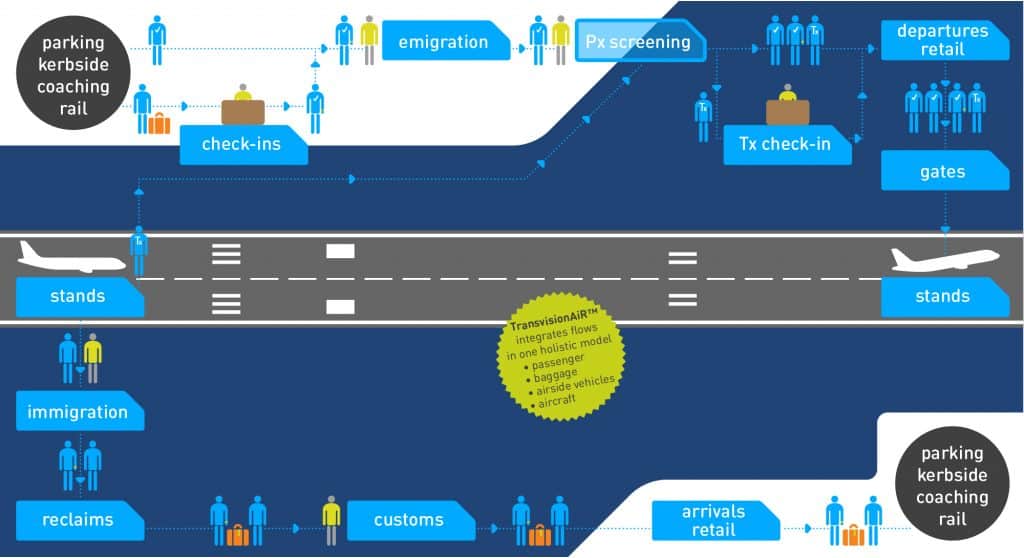
Making changes to your airport to improve flow or capacity will inevitably impact on other areas. From check-in to security, to vehicle flows and passenger expectations – can you afford not to look at your airport as a whole when analysing capacity?
AiQ have concentrated on working with our clients by analysing airport processes as a whole, and not just from the perspective of passenger flow. Our services integrate Airfield, Terminal and Apron, combining Passenger, Baggage, Airside Vehicle, and Aircraft flows. This holistic airport capacity planning ensures the smooth flow of operations within an airport that creates maximum efficiency and customer satisfaction.
Why look at an airports capacity holistically?
No airport is the same. Demographics, airlines and passengers all differ in every airport we have worked on. Even processes themselves can vary. Viewing the airport as an individual entity allows us to realistically evaluate how efficiently it is used. We collate airport data, including schedules, passenger and baggage figures and more, in order to provide you with a holistic view of what is and isn’t working in your airport.
Looking at your airport holistically can achieve a range of benefits, including:
- full airport capacity solutions
- an analysis and simulation of the whole passenger journey throughout the airport
- validating processes or designs
- optimising operational efficiency
- finding bottlenecks
- pinpointing investment decisions
- maximising competitive advantage.
For example, when we worked with Leeds Bradford Airport our holistic approach looked into combining a top-down and bottom-up approach. By implementing the 2-step process with self-service bag drop for charter low cost and full-service carriers at the terminal, passenger processing efficiency was increased by 10-15% when unassisted and over 20% with assistance.
Also, we proved that quickly processed passengers would cause congestion at the boarding pass control, increasing risk of reduced throughput to security at busy hours. We could then recommend increasing processor capacity at boarding pass control by 65% which eased out the bottleneck, helping to quickly transfer passengers to central search.
The possible knock-on effect at security was prevented by utilising body scanners at primary walk-through in order to avail more lanes in peak times which increased efficiency by 30%, keeping queues and waiting times at optimum levels as described by IATA.
If your airport would like to benefit from a holistic approach, improving efficiency and optimizing passenger standards, contact us today

